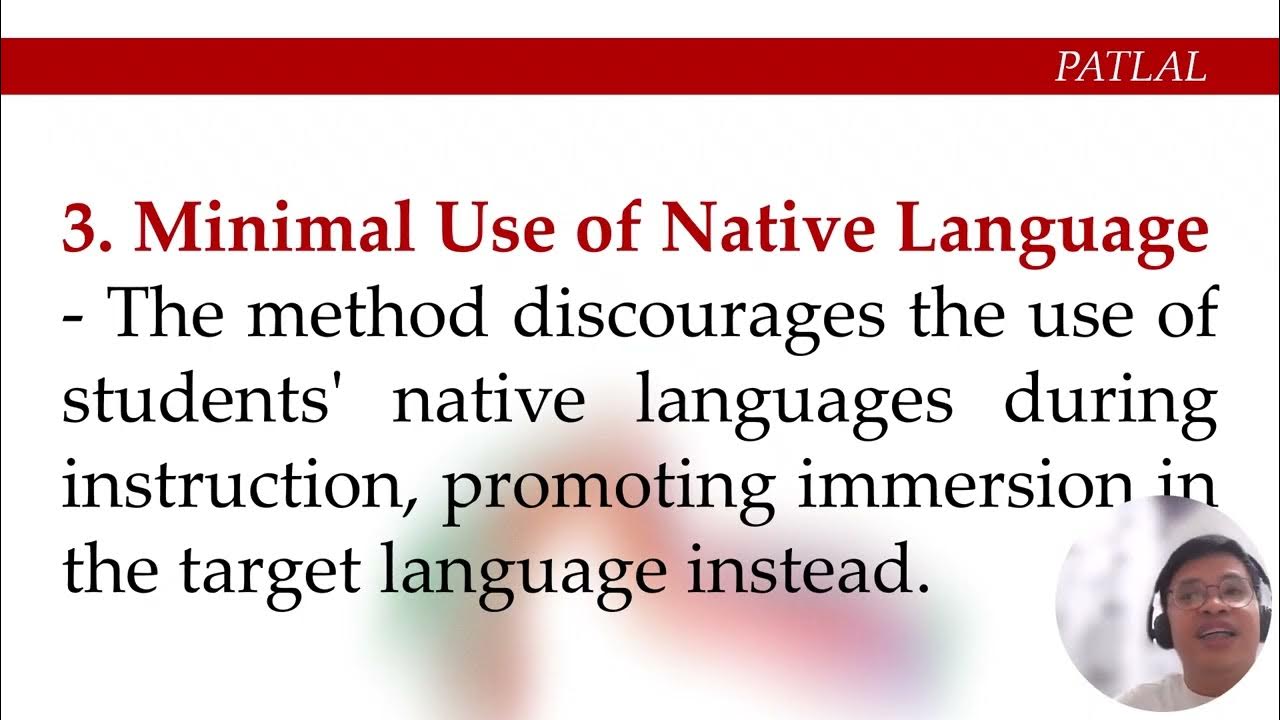APPROACH, METHOD & TECHNIQUE IN ELT | Help Line for ELT Teachers
Summary
TLDRThis video clarifies the distinctions between 'approach,' 'method,' and 'technique' in language teaching, based on Edward M. Anthony's framework. It highlights how an approach defines the theoretical foundation of language learning, a method organizes teaching strategies, and a technique involves specific classroom activities to meet learning goals. The video discusses real-world examples such as the audio-lingual and communicative approaches, emphasizing the importance of blending techniques from various methods to address learners' needs. It also outlines fundamental principles for effective language learning, like the focus on communication, error analysis, and the integration of skills.
Takeaways
- 😀 An **approach** in language teaching refers to a set of beliefs or assumptions about the nature of language and language learning.
- 😀 An **approach** is theoretical and combines linguistic and educational theories.
- 😀 A **method** is a procedural plan for teaching that arises from the approach, focusing on what, when, and how to teach.
- 😀 A **method** reflects the philosophy of the approach and guides the teacher’s practice in the classroom.
- 😀 A **technique** is a specific activity or exercise used in the classroom to accomplish immediate learning objectives.
- 😀 Techniques are the actual classroom steps, such as drills or role plays, that lead to learning outcomes.
- 😀 The audio-lingual approach is based on structuralism and behaviorism, with techniques like listening and repeating to reinforce grammar accuracy.
- 😀 The communicative approach is based on functional grammar and social-pragmatic theory, using authentic materials and focusing on communication.
- 😀 Modern language teaching often combines techniques from various approaches to cater to different learner needs.
- 😀 Key principles in modern language learning include learning as a social process, focusing on doing over knowing, and understanding that errors signal progress in language acquisition.
Q & A
What is the difference between approach, method, and technique in language teaching?
-In language teaching, 'approach' refers to the underlying theory and philosophy about language and learning. 'Method' is a set of procedures used to teach, derived from the approach. 'Technique' refers to the specific classroom activities or tasks that help achieve the learning objectives, following the method.
What does an 'approach' in language teaching focus on?
-An approach focuses on the philosophical and theoretical aspects of language and learning, including linguistic and educational theories. It provides the foundation for the teaching methods and techniques that follow.
How does a 'method' differ from an 'approach'?
-A method is a procedural plan for teaching, detailing how, when, and what to teach. It is based on the approach's theory but focuses on the practical implementation of teaching, often including the roles of the teacher and learner.
What is the role of a 'technique' in language teaching?
-A technique is a specific classroom activity or task designed to achieve immediate learning goals. It is the practical step-by-step implementation within a method, and it must align with the approach and method being used.
Can different methods be derived from the same approach?
-Yes, multiple methods can be derived from a single approach. The approach provides the theoretical basis, while the method outlines the procedural steps, and techniques can vary within each method.
What is the core idea behind the Audio-Lingual Method?
-The Audio-Lingual Method is based on behaviorism and structuralism, emphasizing the memorization of language patterns through listening and repetition. It avoids explicit grammar teaching and focuses on forming accurate linguistic habits.
How does the Communicative Approach to language teaching differ from the Audio-Lingual Method?
-The Communicative Approach focuses on developing communicative competence through contextualized and authentic language use, while the Audio-Lingual Method emphasizes accuracy through repetitive practice and focuses more on grammar and structure.
What are some key techniques used in the Communicative Method?
-Techniques used in the Communicative Method include information-gap activities, opinion-gap tasks, problem-solving activities, and reasoning-gap exercises. These techniques prioritize communication and the use of language in social contexts.
Why do modern language teachers often use a mix of techniques from different methods?
-Modern language teachers often mix techniques from different methods to cater to the diverse needs of learners. This approach allows teachers to select the most suitable techniques for specific learning situations rather than strictly adhering to one method.
What are the key principles of modern language learning according to the video?
-The key principles include: 1) The whole is more important than the sum of its parts, 2) Language learning is a social process, 3) Language learning is process-oriented, 4) New information should relate to prior knowledge, 5) Language skills are interrelated, 6) Doing is more important than knowing, and 7) Student errors signal progress.
Outlines

هذا القسم متوفر فقط للمشتركين. يرجى الترقية للوصول إلى هذه الميزة.
قم بالترقية الآنMindmap

هذا القسم متوفر فقط للمشتركين. يرجى الترقية للوصول إلى هذه الميزة.
قم بالترقية الآنKeywords

هذا القسم متوفر فقط للمشتركين. يرجى الترقية للوصول إلى هذه الميزة.
قم بالترقية الآنHighlights

هذا القسم متوفر فقط للمشتركين. يرجى الترقية للوصول إلى هذه الميزة.
قم بالترقية الآنTranscripts

هذا القسم متوفر فقط للمشتركين. يرجى الترقية للوصول إلى هذه الميزة.
قم بالترقية الآن5.0 / 5 (0 votes)






